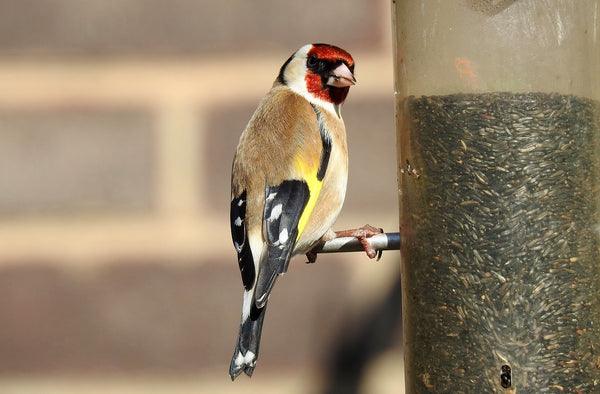
Goldfinch: Identification, Behaviour, and Feeding Tips
Share
The Goldfinch (Carduelis carduelis) is a small bird which heralds from the finch (Fringillidae) family. Its body is predominantly brown in colour (golden), belly and rump are white, and its wings are mainly black with a yellow band.
Its bill and legs are a pinkish colour, the crown is black, and it has a red face and a black-and-white head. It's certainly distinctive.
Goldfinches inhabit most of the UK and many woodland edges, parks, and gardens where there are scattered trees and tall seeding plants like thistles and docks. Outside of the breeding season, they will form nomadic flocks often spotted feeding in fields and on road verges.
These delightful little birds are known for their enchanting singing, and they possess an appealing rambling twitter. At one time goldfinches were commonly kept as caged birds because of their pleasant song and colourful appearance.
Goldfinches feed on various tree seeds such as alder and birch, and on thistle, teasel and dandelion seeds (which it can procure thanks to its thin bill and light weight).
Haith's Goldfinch and Siskin mix has become ever more popular with goldfinch and siskins. It's a unique blend of small oil-rich seeds including Niger and Teazle. These free-flowing, lightweight seeds need to be fed from a unique Niger seed feeder to cut down on waste.
During the winter, as the weather turns colder, some birds migrate to a warmer climate until the spring. Thankfully, however, we're fortunate that a significant number of goldfinch will overwinter in our gardens. And the chances of spotting a goldfinch has steadily increased as, according to the BTO's figures, we're five times more likely to see a Goldfinch in our garden than we were twenty years ago. We'd like to think our premium quality sunflower hearts and Niger seed offerings have played a part in this tremendous new for goldfinches.

Written by Tina Jakes
